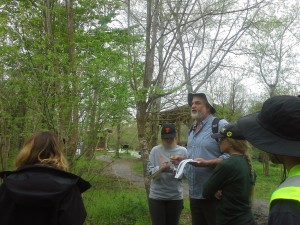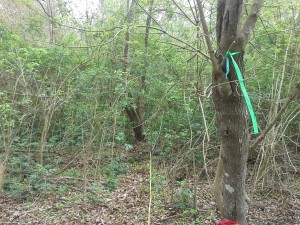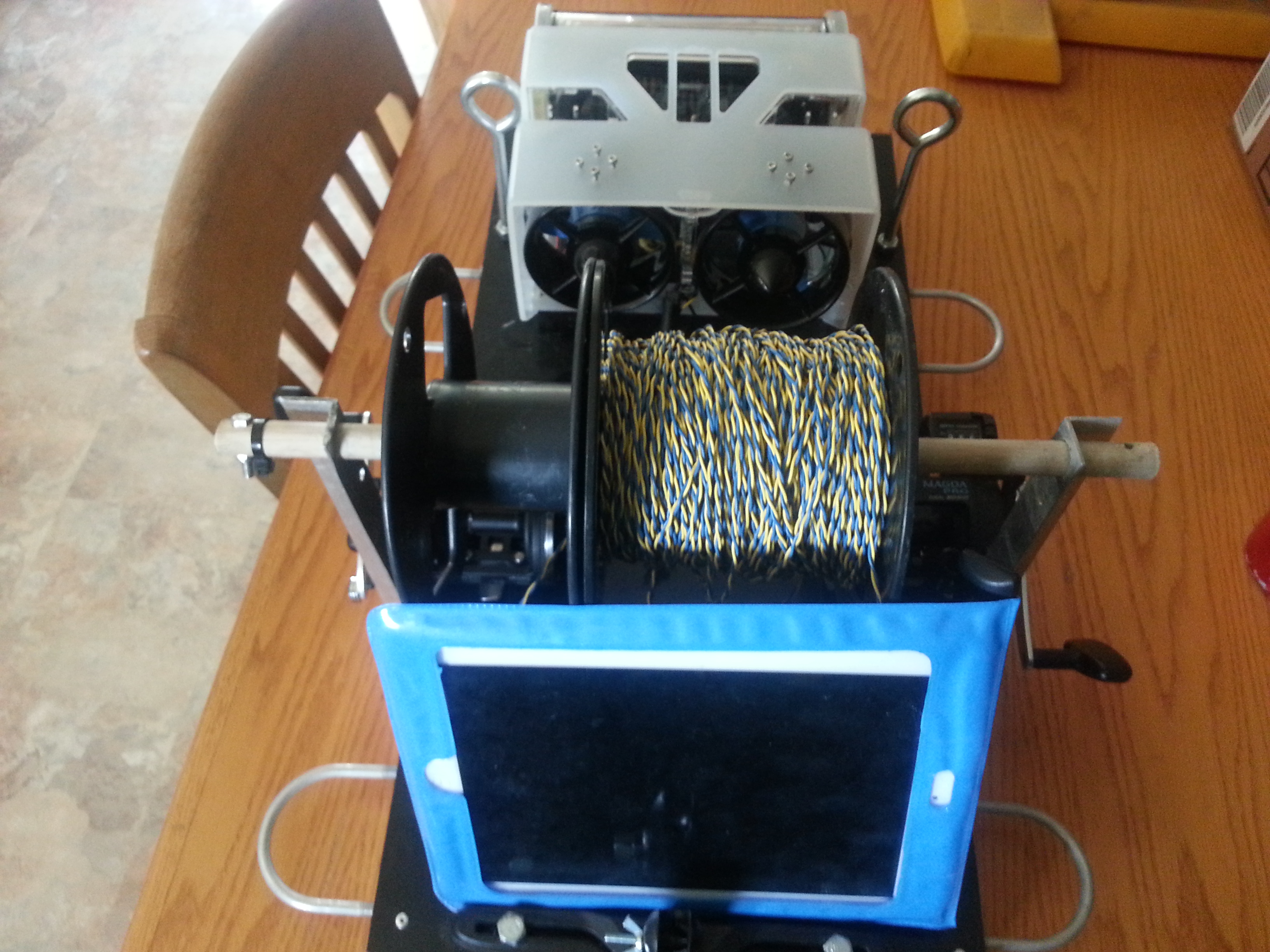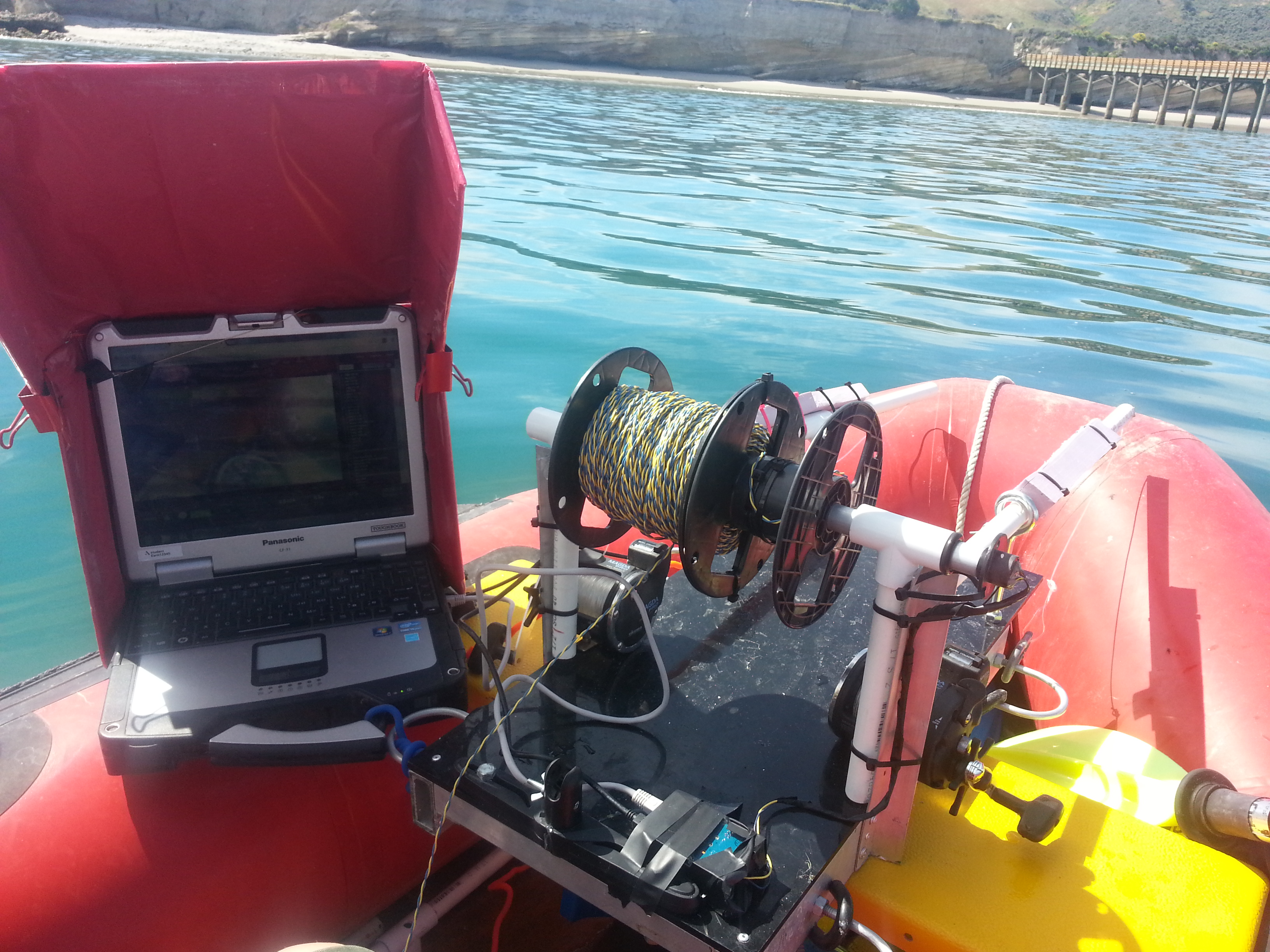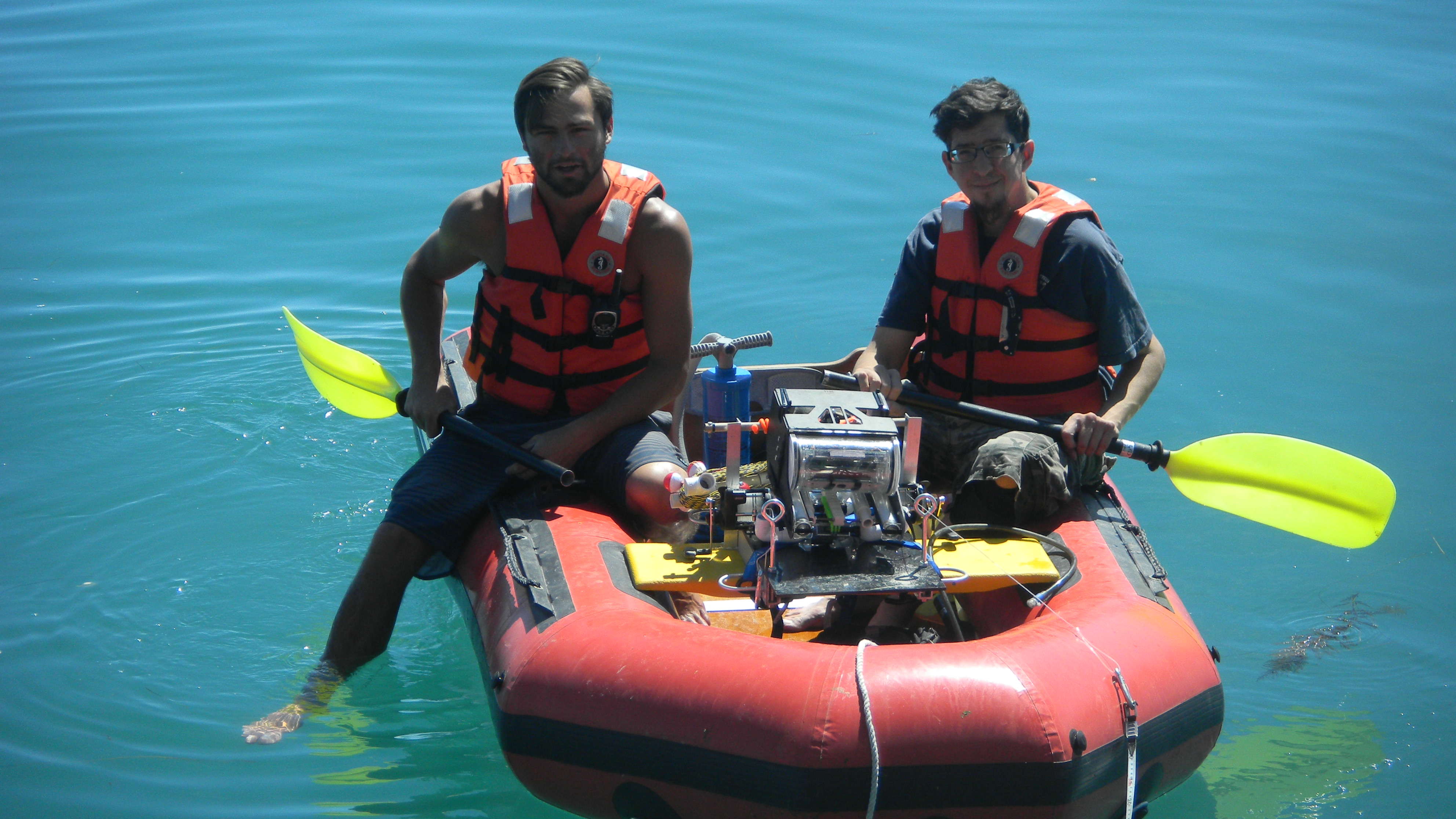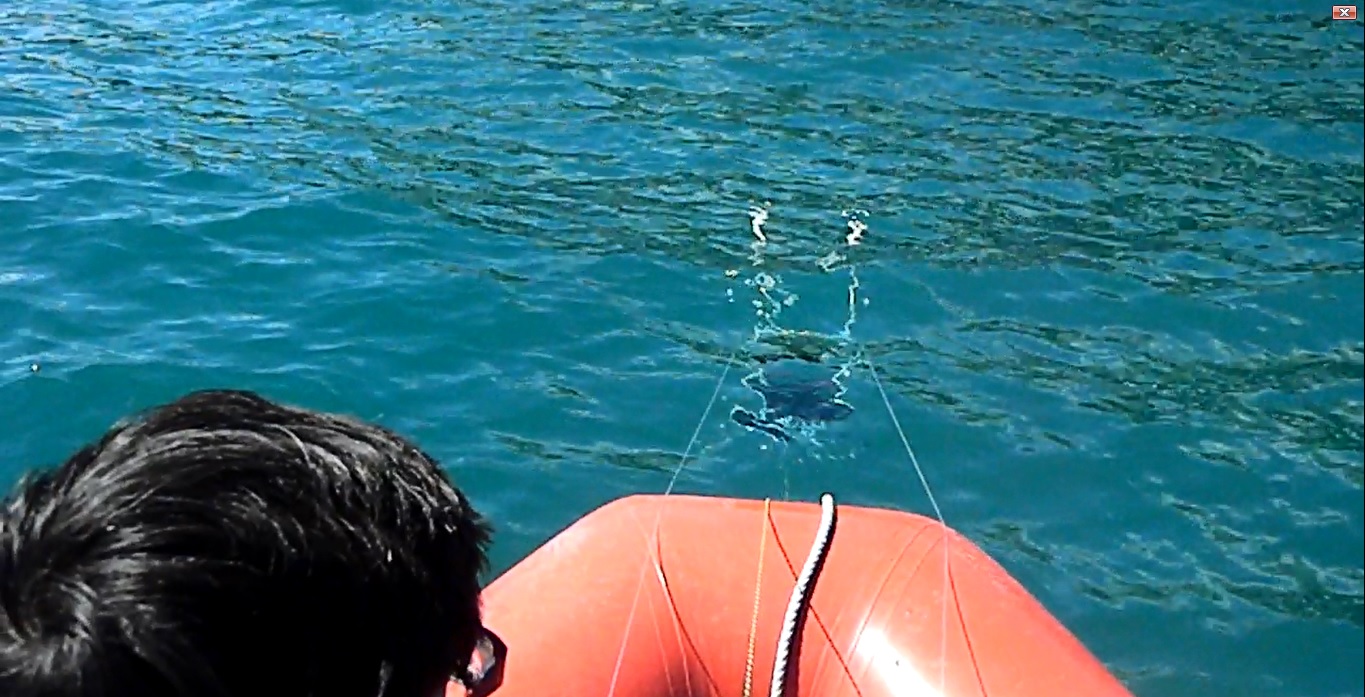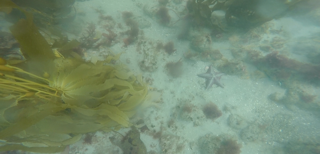Posts
Day 4: the evening data entry
/in NOLA /by Sean AndersonFellow swamp donkey Riley killing it on some data entry.
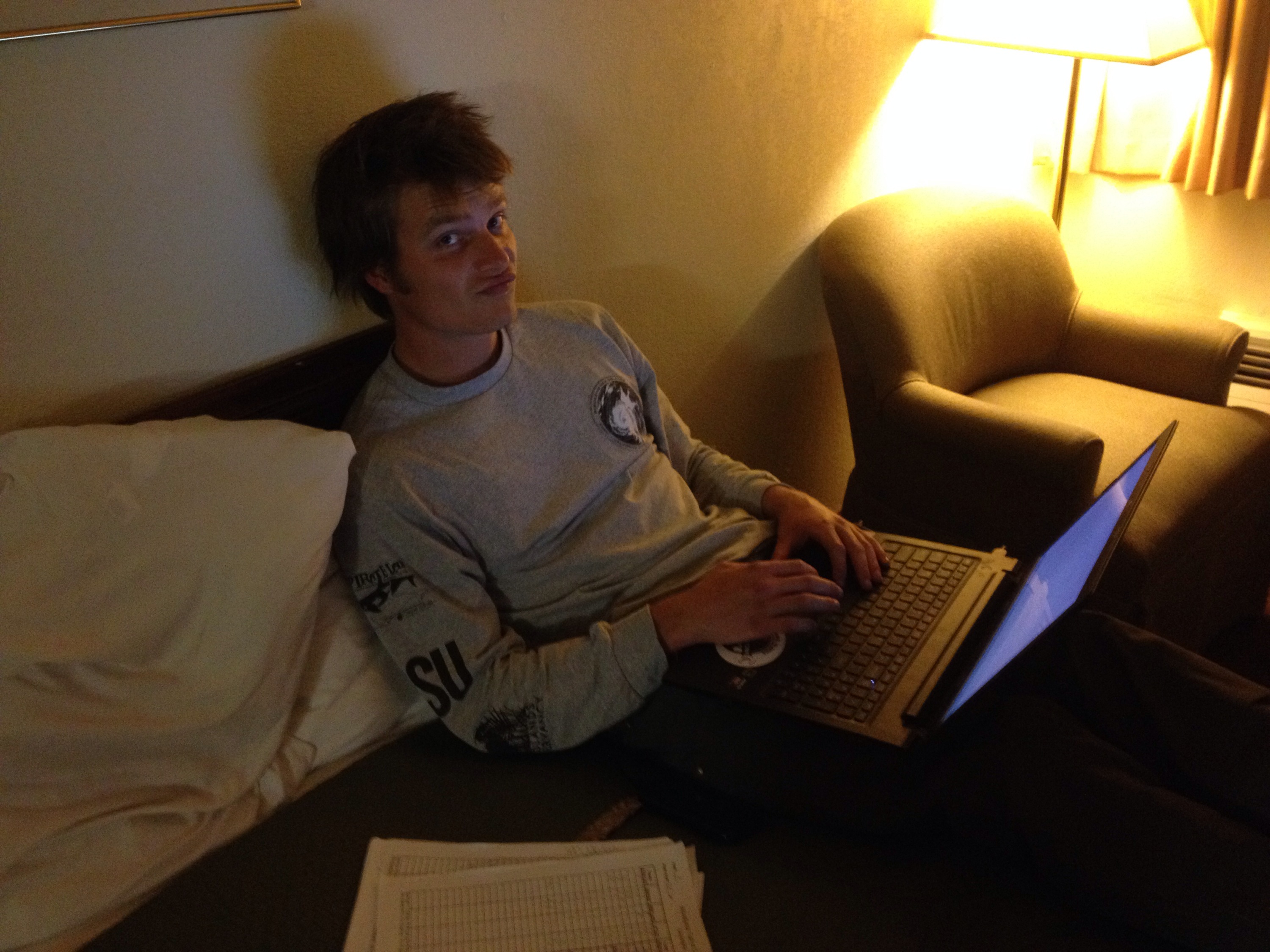
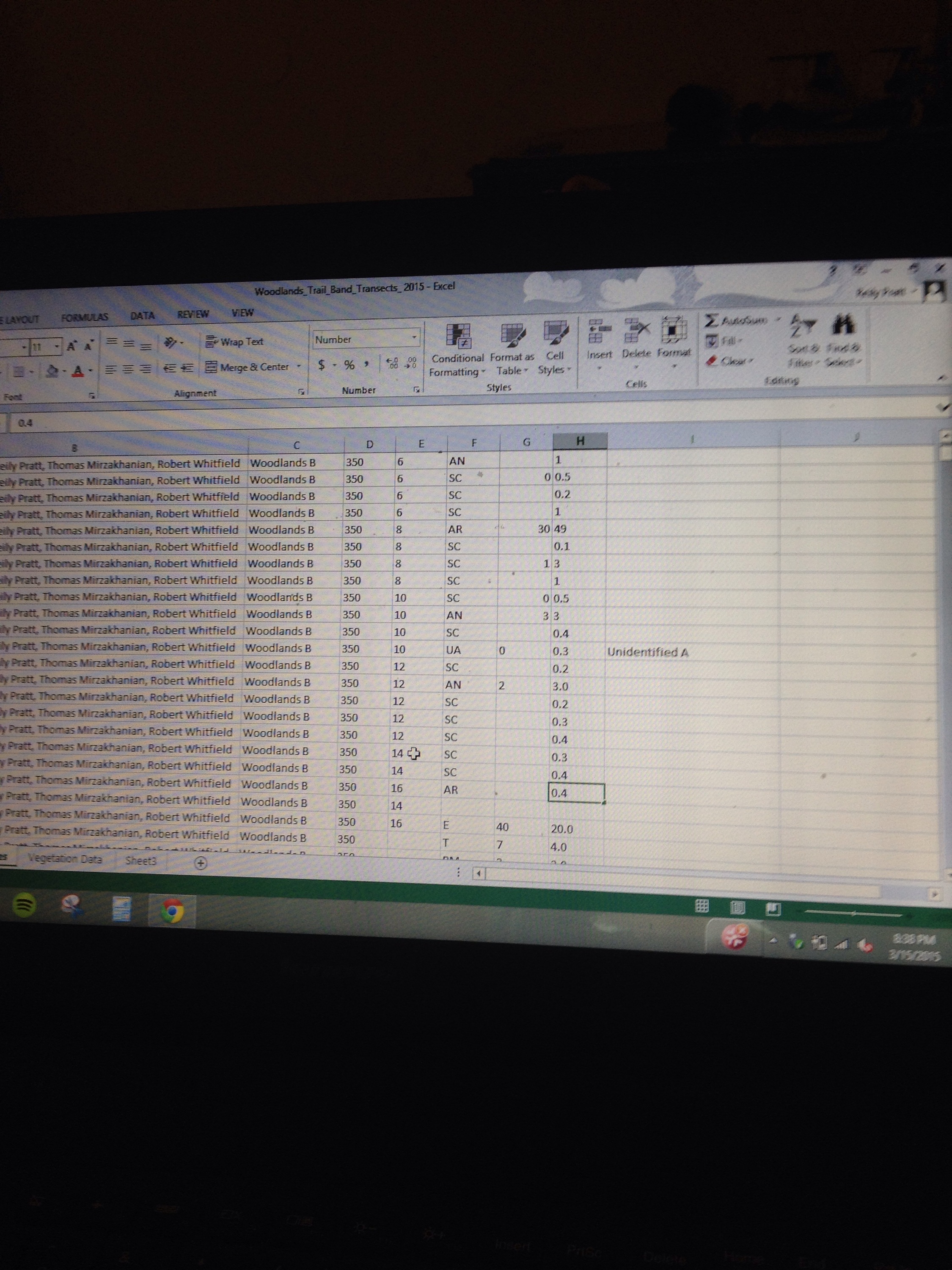
I need a water stick !
/in NOLA /by Sean AndersonDay Four: Wet boots
/in NOLA /by Sean Anderson
Well, I certainly don’t feel like a tourist anymore. Today we had our first chance to get our boots dirty in the English Turn Forest, and after a refresher on species names from the good Dr. Huggins, it was off to the field for some surveys. And while it was slow going through thickets of blackberry and water up past your boots, we managed to get a lot of work done in short amount of time.
Another awesome day!
/in intertidal zone, National Park Service Intertidal Ecologists, ROV, Uncategorized /by Sean AndersonIn complete contrast with last trip to Santa Rosa Island, things have gone quite well! The rest of our intertidal team arrived and brought us a patch kit for the boat, and it’s holding air!
We have been testing our intertidal ROV, the Black Pearl, and it has passed through every test that we’ve thrown at it with flying colors.
Pearl has a set of PVC skids and ballasts which also serve connection points for the intertidal rig. There is an accessory rail with a top down gopro camera, and a second at a 45 degree angle down and forward. Due to the extra weight, additional floats were necessary, but the ROV flies perfectly flat, and straight!
The intertidal system is necessary because there is often a lot of wave action in the shallow subtidal and intertidal zone, and the area is covered in rocks. It would be too dangerous to send in divers, so sending in an ROV is ideal, but running a straight transect is very difficult.
Our system was designed by Paul and uses a gondola, or track/rail set which attaches in the mid intertidal zone via two monofilament lines. The ROV is then launched from offshore by boat or kayak.
The boat / kayak setup is being designed to allow two National Park Service Intertidal Ecologists to carry one unit, place it on a kayak (their method of travelling between sites) and run their subtidal to intertidal transects after performing the intertidal surveyss. It consists of an aluminum frame with two ocean fishing reels with 150lb test line, a tether reel (with slip ring for tangle free operation) and a Ipad mount. The Ipad is in a submersible case, and provides GPS location, along with ROV control (currently not functioning due to software issues, so a tough book is being used.)
We first tested it by launching it at the pier to prove the concept, and the ROV scooted perfectly along the lines!
Next we took the boat out and ran the lines from the boat to the pier, and yet again Pearl ran it with no problems!
Finally, today was the real test, the system was deployed in the intertidal site. The setup worked very well, there was a wall of sea grass which caused us to need to extend the transect lines back further, but Pearl pushed through the sea grass no problem.
Becoming A Researcher: Lesson 1 – Overcoming Diffidence
/in Interdisciplinary, Research, student, Undergraduate /by Cordell TarrantOver the last few months, I have been in the process of “learning” how to become a researcher. It has been a fulfilling sojourn so far; I am excited for where it can go. As I prepare for Western Political Science Association conference in April, I have been reflecting back on the the journey thus far and I was able to identify three lessons I have learned so far on my road to becoming a researcher. Each of the lessons was revealed during three different “era’s” of the last few months: Diffidence, Bewilderment, and Resolve.
I am a proud member of the Interdisciplinary Research Learning Community (IRLC) this semester, and I am working on an independent research project for the first time. The IRLC brings together 17 undergraduate research students to promote interdisciplinary approaches to research questions, and to encourage interest in undergraduate research. It is an amazing opportunity, and I am glad to have had this chance.
When I first submitted my application to become a part of the IRLC, I had this grand imagination that I had just applied to a super elite team of researchers armed with the resources to change the world. I had visions of people working on projects that my brain was likely not even capable of imagining. I thought of a group of people who had an overflow of innovative and learned ideas that would rival Newton, and oratory skills that would bring Cicero to his feet. I thought they would all have years of determination and passion built up, and that I would be the quiet, shy newcomer – not really sure what to do. Slowly, the seeds of Diffidence began creeping into my psyche.
Not long after, I received an email from my mentor saying “Congratulations! You have been selected…” and I was elated! Riding high off of my recent (and first!) academic presentation on “Localized Politics Through the Eyes of Representative Bizz Johnson” at the Southern California Conference for Undergraduate Research (SCCUR), I jumped at the opportunity to accept my appointment to the community and dive into the world of undergrad research. How much harder could working on an independent research project be? I could totally do it! I was going to metaphorically “blow everyone’s mind.”
…And then winter break happened. No, nothing overly terrible happened during the break – it just allowed time for Diffidence to begin decorating its new apartment in my psyche. My research project had ended with the semester; I wasn’t working on anything or preparing for anything – I didn’t have anymore innovative and learned ideas to share! My mind started to increasingly churn: “What will I be doing in this new community?” “These super elite researchers are all going to be talking about their amazing research, and I am going to end up sitting there with a blank stare.” “Do I really have what it takes to be in this group?” “Are my thoughts and ideas good enough?” “Am I good enough?”
Before the first meeting of the IRLC, I had a met for the first time with one of my professor’s who also happens to be one half of the duo overseeing the IRLC. *Quick aside here: I generally tend to leave decent first impressions on people – this was not one of those times, nor was it the last, unfortunately. Let’s just say, I have learned quite a bit from this professor in our one-on-one discussions on first impressions (and second, and third…).* During our meeting, I was asked for the first time the question that I have since come to equate with panic and fear – “So, what’s your research?”
My response: “Uh, I am not quite sure.”
Diffidence had finally found his home. “Why don’t you know what you’re researching, Cordell?” “Where are your ideas to offer, Cordell?” “How can you prove yourself if you don’t even know what you are doing, Cordell?” For the first time, I had been confronted with the possibility that my fears of not being good enough had merit. The first meeting of the IRLC, I walked into the room and realized my imaginations of the super elite researchers, filled with innovative and learned ideas, for the first time. We were broken off into specialized pods that illustrated the interdisciplinary initiatives in the course design. I introduced myself to my pod and we all got to chattering about ourselves. I discovered that all of my imaginations and visions for what this community would be were accurate – I was surrounded by super elite researchers with innovative and learned ideas. I had been grouped with a nurse specializing in vulnerable populations, an educator specializing in bilingual education development, and an atmospheric chemist studying the rise in mercury levels in the seafood population.
Wow.
To say I felt out of my league was an understatement. Thankfully, I only had a few moments to introduce myself as a “political economist” and didn’t really have to get into my “research” before our conversation had been cut. We were informed that our specialized pod of super elite researchers had been enlisted in the Marshmallow Competition: build the highest freestanding structure using spaghetti noodles, tape, and marshmallows – in 18 minutes. In the first five to ten minutes of the competition, I had taken a back seat. Diffidence told me that I had no valid ideas to offer the group in accomplishing our goals, and that I should just follow their lead. I kept doubting myself, so I remained quiet and followed instructions. I decided to quickly scope out our competition and I was shocked – they were beating us! My mind began racing on how this could be possible – because, of course, our specialized pod of super elite researchers is the best specialized pod of super elite researchers. Suddenly, it hit me – I realized that by being quiet and just following instructions, I had handicapped our team! The green giant that is Competition overcame Diffidence and I decided to take a leap of faith, open up my mouth, formulate words, and offer my ideas to the group. Shockingly, they were well received. Working together and utilizing all of our unique perspectives, we were able to build a structure that tied for first place, and might have given some Kindergartners some real competition!
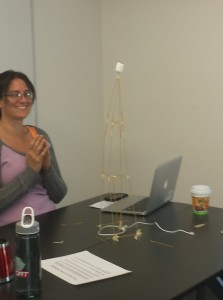
After our first meeting, I found myself thinking back on that experience – all I had to do was think and then share. It suddenly seemed so simple: different people with unique perspectives and diverse backgrounds can band together to solve a problem and achieve a desirable outcome – what a novel concept! Competition, mixed with this enlightenment, made me realize that there was no legitimate reason I was not qualified to continue on in this band of super elite researchers. I wasn’t good enough yet, but I was determined to prove my worth.
My first lesson had been learned: don’t allow fear to overshadow your talent, use it to expand your talent into unknown territories. Diffidence no longer paralyzed me, it fueled me. It was time for me to embark on the path to finding a concrete research question and earn my place among the super elite researchers, with innovative and learned ideas, who have come to be known as: The SURFer’s.
Little did I know that this path would lead to the era of Bewilderment…
(Becoming A Researcher Series: Part 1 of 3)
Day 3 Louisiana history
/in NOLA /by Sean AndersonA nice trip to learns some of the history of the New Orleans near Jackson square
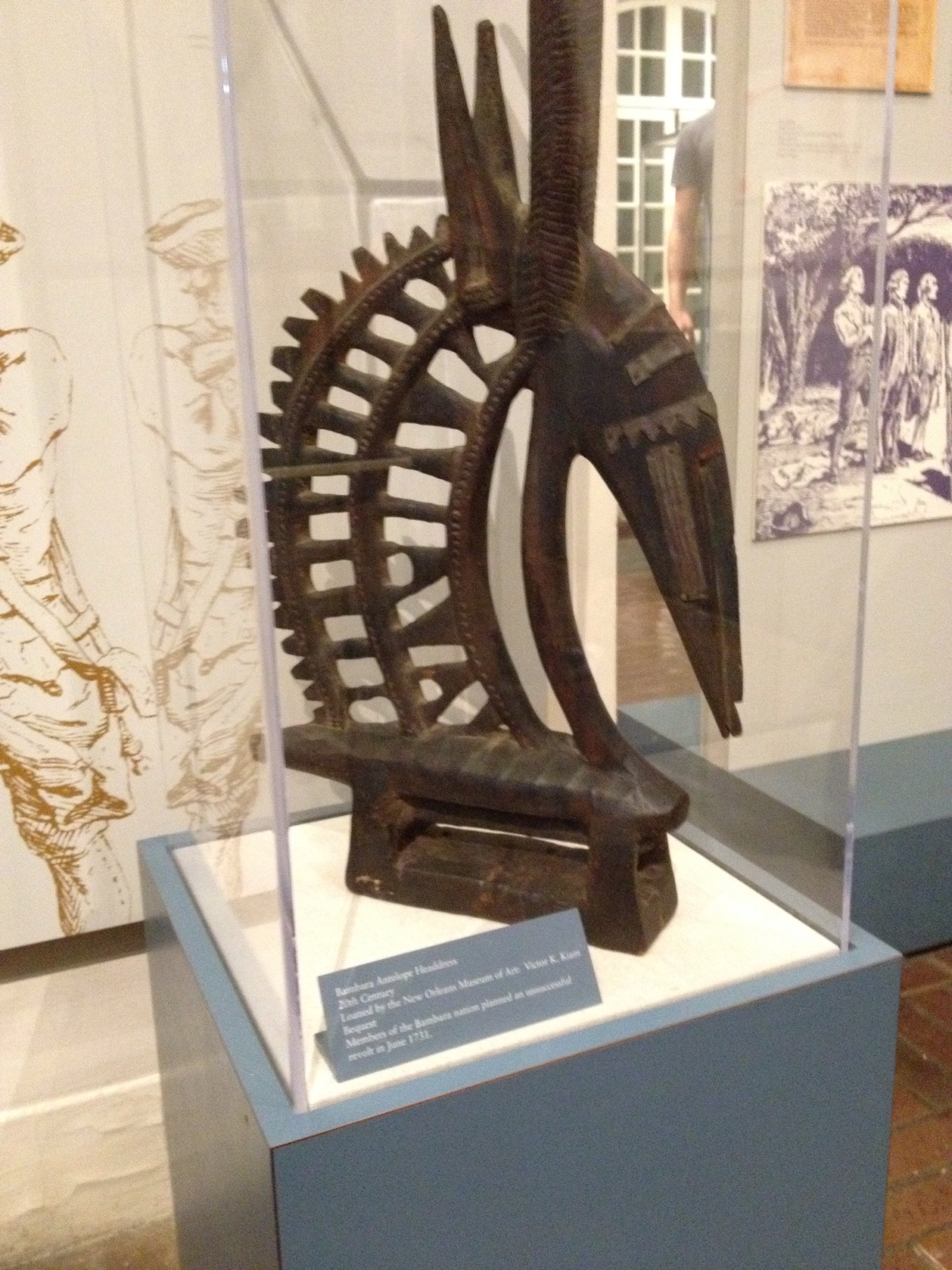

New Orleans School of Cooking
/in Food /by Sean AndersonToday was one of the best experiences I have had. I love to cook and invite others over to eat. Michael from the New Orleans School of Cooking gave us tips on propper serving etiquette. In addition, he told us Earth Balance is an awesome substitute for dairy when is comes to making soups! ![]()
Day 3
/in NOLA /by Sean AndersonAt a jazz club about to see some local musicians perform. It is interesting how big music, especially live music is in New Orleans




